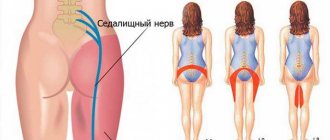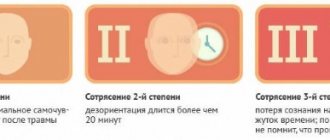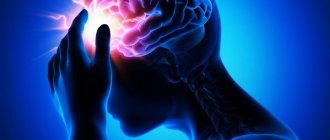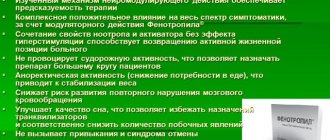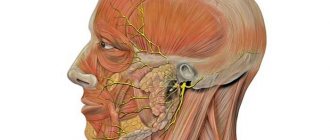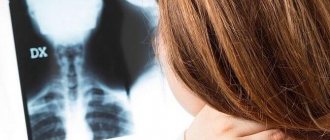Sciatica is a disease that requires intensive drug treatment, especially in the acute phase. When symptoms of inflammation of the sciatic nerve appear, doctors prescribe medications of various effects. Medicines relieve pain, reduce discomfort in the lower back and legs, and support the body during the recovery period.
What is sciatica
The first drugs that neurologists recommend starting treatment with are non-steroidal anti-inflammatory drugs. However, for full effect, any therapy must be comprehensive. Complex treatment includes tablets, injections, ointments. Those who wish can also use folk remedies, subject to the recommendation of the attending physician.
In this article we will tell you in detail about the drug treatment of sciatica: the best pills, injections, ointments, patches, how to treat it at home, effective exercises. I promise you will like it.
What ointments can be used
When the sciatic nerve is pinched in the leg, you can use different types of ointments. Some of them should not be used in the acute phase of pain. We are talking about ointments and creams with irritating substances and components. They can be applied only after the acute process has subsided.
These drugs are divided into several types. Depending on the cause and course of the disease, the doctor may prescribe the patient one of the drugs that belongs to one of the following groups:
- non-steroidal anti-inflammatory drugs (NSAIDs);
- warming up;
- homeopathic;
- combined;
- chondroprotectors.
Not all ointments can be applied during an exacerbation of the disease.
Remember that full-fledged drug treatment cannot consist only of rubbing with ointments.
Complex therapy (injections, tablets, therapeutic exercises and physiotherapy) should be prescribed only by a qualified neurologist.
Types of ointments
In the treatment of sciatica, ointments of various clinical and pharmacological groups are used. Some are designed to reduce the intensity of symptoms, others to partially restore spinal structures. When choosing an external remedy for a patient, the neurologist takes into account contraindications and assesses the risk of developing side effects. Preference is given to those drugs that have a multifaceted effect on the course of sciatica. They not only eliminate pain and inflammation, but also prevent the spread of pathology to healthy bone, cartilage, and soft tissues.
Chondroprotectors
This is the only group of drugs that partially restore damaged lumbar intervertebral discs. Chondroprotectors are clinically effective only with minor destruction, characteristic of the initial stage of development of the pathology. The active ingredients of topical products are chondroitin sulfate and/or glucosamine sulfate or hydrochloride. Collagen is also considered a chondroprotector, but its therapeutic effect has not been confirmed by research results.
Glucosamine and chondroitin have completely different mechanisms of action, so neurologists often recommend ointments with a combined composition to patients. They have the following pharmacological properties:
- control cellular filtration;
- slow down the production of inflammatory mediators;
- stimulate the process of formation of new blood vessels for the regeneration of damaged cartilage tissue.
After 2-3 weeks of constant use, their anti-inflammatory and analgesic effects appear.
Chondroprotectors are intended for long-term course treatment. Depending on the degree of damage to the discs, they are used from several months to two years.
Chondroxide
Chondroxide gel and ointment are produced by a Russian pharmaceutical factory. The active ingredient in all dosage forms is chondroitin sulfate. The drugs are used in the treatment of sciatica to inhibit degenerative changes in cartilage and connective tissue structures. This action ensures the ability of chondroitin to inhibit enzymes that destroy lumbar discs and vertebral bodies. Chondroxide does not have a wide list of possible side effects. Contraindications to its use are:
- microtrauma of the skin in the area of application (cuts, scratches, abrasions);
- childhood;
- individual intolerance to ingredients.
Chondroxide gel is used in the subacute period in combination with systemic drugs. Its ingredients are quickly absorbed by the skin, eliminating pain and inflammation. The components of the ointment are absorbed more slowly, but have a prolonged (long-lasting) analgesic effect.
Chondroitin-Acos
A 5% light yellow ointment exhibits analgesic and anti-inflammatory activity after several days of treatment due to the high concentration of chondroitin sulfate. Lower back pain decreases or completely disappears, mobility improves, including due to the resorption of swelling. Neurologists usually recommend the simultaneous use of Chondroitin-Acos ointment and capsules. In what cases is the drug not prescribed:
- infectious and inflammatory skin pathologies;
- tissue necrosis;
- violation of the integrity of the skin in the areas of intended application.
One of the auxiliary ingredients of Chondroitin-Akos ointment is dimexide. It ensures maximum absorption of chondroitin sulfate into damaged tissues. Dimexide enhances and prolongs the effect of the chondroprotector due to its pronounced analgesic and anti-inflammatory properties.
Chondroitin gel
Chondroitin is a clear gel with a pleasant orange scent. The drug contains 5% chondroitin sulfate and dimexide as an additional ingredient. Course use of Chondroitin gel inhibits the resorption of vertebral bodies, stimulates the restoration of connective tissue and cartilage structures, reduces calcium loss by the body, accelerating the regeneration of intervertebral discs.
Absolute contraindications to the use of external agents are hypersensitivity to the ingredients, predisposition to bleeding, thrombophlebitis. Chondroitin is not prescribed to pregnant women due to the lack of evidence that the drug has no teratogenic effect.
Honda cream
This dietary supplement (BAA) includes glucosamine, chondroitin, internal fats (pork, badger, mink), and essential oils. It is advisable to use Honda cream at the stage of remission of sciatica to prevent relapses and eliminate stiffness. Essential oils increase the effectiveness of treatment due to their local irritating and distracting effects. Honda's therapeutic line of external products includes a cream gel with a roller for easy application to the skin. In addition to glucosamine and chondroitin, it contains hyaluronic acid, which stimulates the production of synovial fluid.
Honda cream is not prescribed to pregnant or breastfeeding women. Therapy is not carried out if patients are intolerant to the ingredients.
Teraflex M
The combined drug Teraflex M is included in therapeutic regimens at any stage of sciatica. The cream has an analgesic effect immediately after its application to the lumbar area. At first, there is a pleasant feeling of coolness due to the presence of mint oil and camphor in Theraflex. These ingredients irritate subcutaneous tissue receptors, stimulating blood flow. Therefore, the coolness is soon replaced by a feeling of warmth.
The undoubted advantage of Teraflex is the presence of both chondroitin and glucosamine. Their combination helps to inhibit enzymatic activity and slow down the degeneration of cartilage tissue.
The drug is not used in case of hypersensitivity to the components and damage to the skin at the site of application.
Sophia
Sophia cream with glucosamine and chondroitin is a dietary supplement used after the main therapy. In addition to chondroprotectors, the dietary supplement contains phytoextracts of cinquefoil, comfrey, burdock, elecampane, St. John's wort, rosewood essential oil, collagen hydrolyzate, and sea buckthorn oil. The cream contains nimesulide, a non-steroidal anti-inflammatory drug. Daily use of Sophia promotes the natural regeneration of intervertebral discs, providing them with nutrients for active renewal.
Absolute contraindications to dietary supplement therapy are pregnancy, lactation, individual intolerance to the ingredients.
Nonsteroidal anti-inflammatory drugs
Nonsteroidal anti-inflammatory drugs (NSAIDs) for external use always become the first choice drugs in the treatment of sciatica. Preference is given to ointments and gels whose active ingredients are diclofenac, nimesulide, meloxicam, ketoprofen, ibuprofen. NSAIDs inhibit cyclooxygenase, an enzyme that stimulates the biosynthesis of mediators of pain, inflammation, and fever (prostaglandins, bradykinins, cytokines). They prevent the migration of macrophages into damaged tissues, thereby stopping inflammatory swelling.
Voltaren
The Swiss manufacturer produces 1% and 2% Voltaren gel with the active ingredient diclofenac. The drugs have a pronounced analgesic and anti-inflammatory effect, improve blood circulation and microcirculation in the lumbosacral spine. Voltaren gel contains no fatty components, so diclofenac is quickly absorbed into pathological lesions. The analgesic effect appears immediately after applying the drug and lasts for several hours.
Diclofenac is a non-selective NSAID and is therefore not prescribed to patients with severe diseases of the gastrointestinal tract.
Ibuprofen
Ibuprofen ointment and gel have anti-inflammatory, antipyretic, analgesic effects. These dosage forms are used to eliminate mild to moderate pain. Ibuprofen undergoes slow transdermal and transepidermal absorption, penetrating directly into damaged lumbar structures. External use of any product with ibuprofen for sciatica helps reduce pain at rest and during movement.
The ointment or gel is not prescribed to patients with hypersensitivity to NSAIDs, severe pathologies of the liver, kidneys, stomach, or hematopoietic disorders. During pregnancy, Ibuprofen is used only in the early stages.
Fastum gel
The active ingredient of Fastum gel is ketoprofen, which exhibits local analgesic and anti-inflammatory activity. The drug also has an antiexudative effect, so it is included in treatment regimens and for the relief of edema. It is they who often infringe on the sciatic nerve, causing its inflammation and (or) damage. Fastum gel quickly improves the patient's well-being, but it should be used with caution. If the dosage regimen determined by the doctor is violated, the likelihood of developing local adverse reactions increases. Clinically, they are manifested by a rash, redness and swelling of the skin, and severe itching.
Fastum gel has a wide list of contraindications - eczema, infectious skin diseases, bronchospasms, 3rd trimester of pregnancy, lactation, individual intolerance to components.
Diclofenac
A Russian manufacturer produces 5% Diclofenac gel. Such a high concentration of the active ingredient causes a pronounced analgesic effect of the external drug. The drug is a transparent jelly-like substance with a pleasant odor. Its aroma is given by essential oils of lavender and pine, which also have therapeutic effectiveness. They prolong and enhance the effect of NSAIDs, irritate subcutaneous receptors, stimulating blood circulation.
The high quantitative content of diclofenac limits the use of the gel in some groups of patients. The drug should not be used for bronchospasms, in the 3rd trimester of pregnancy, or for severe kidney and gastrointestinal diseases. In some cases, the problem is solved by replacing the gel with 1% or 2% Diclofenac ointment.
Butadion
The active ingredient of Butadione 5% ointment is phenylbutazone, which has anti-inflammatory, analgesic and antipyretic effects. Prescribing this external remedy to patients with sciatica makes it possible to reduce the dose of systemic medications. Therefore, it is advisable to use it in the subacute period, and at the stage of remission to prefer safer means. Exceeding dosages and duration of therapy often causes the development of local and systemic adverse reactions.
Butadion ointment has many contraindications. These are intolerance to acetylsalicylic acid, ulcerative lesions of the stomach and duodenum, decompensated chronic heart failure, arrhythmias, hyperkalemia, liver and kidney failure, 1st and 3rd trimester of pregnancy.
Diclogen
5% Diclogen gel is a medicine with the scent of lavender, used at any stage of sciatica. It is applied to the lumbar region during relapses to enhance the effect of systemic drugs. And during the remission stage, the use of the gel helps prevent exacerbation of sciatica. To do this, Diclogen is distributed in a thin layer on the skin and lightly rubbed in when the first discomfort appears. The active ingredient of the drug, diclofenac, quickly relieves inflammation of the sciatic nerve and prevents the involvement of healthy tissue in the pathological process.
Like other external NSAIDs, Diclogen has many absolute contraindications to therapy. The drug is not prescribed to patients with serious diseases of the kidneys, gastrointestinal tract, or cardiovascular system.
Combination drugs
When drawing up a therapeutic regimen for sciatica, neurologists often give preference to ointments with two or more main components. Such external agents have a multifaceted positive effect on damaged vertebral segments of the lower back. There is no need to use several drugs at once, each of which has its own list of contraindications. To relieve the symptoms of sciatica, improve blood circulation and microcirculation, it is enough to use one ointment with a combined composition.
Dolobene
Using Dolobene gel with essential oils of pine, lemongrass and rosemary in the treatment of sciatica can quickly eliminate pain, normalize trophism, and improve the condition of blood vessels in the lower back. The therapeutic effect of a multicomponent product for external use is achieved by the complex action of three active components:
- dimethyl sulfoxide has antiexudative, anti-inflammatory and local analgesic effects;
- heparin improves the regenerative abilities of connective tissues, normalizes the permeability of blood vessel walls;
- dexpanthenol exhibits pronounced regenerating activity, stimulates the restoration of soft tissues by improving the processes of epithelization and granulation.
Absolute contraindications to the use of Dolobene are hypersensitivity to the components, pregnancy, lactation, bronchial asthma, severe pathologies of the heart, kidneys, and liver.
Dimexide
Dimexide, or dimethyl sulfoxide, is a chemical compound that exhibits moderate fibrinolytic and antiseptic activity, and has analgesic and anesthetic properties. Pharmacies sell Dimexide gel, which is used in the treatment of almost all pathologies of the musculoskeletal system, including sciatica. This product is not a combination product, as it contains only one active ingredient. But dimexide is part of many other external preparations:
- Dolobene;
- Chondroxide;
- Capsicama;
- Remisida;
- Ketorola.
The inclusion of dimexide in ointments, creams and gels ensures maximum absorption of other components. This chemical compound quickly passes through biological membranes, increasing their permeability to other drugs. Dimethyl sulfoxide is often used as a transporter of substances to the area of damaged tissue.
Warming and irritating ointments
Ointments with a warming, local irritating and distracting effect can be used in the treatment of sciatica only after the inflammation has stopped. Otherwise, due to an increase in local temperature, healthy lumbar spine structures will be involved in the pathological process. Such external remedies are usually used during the remission stage, when lower back pain occurs due to changes in weather, hypothermia, influenza, or ARVI. Contraindications to the treatment of sciatica with warming and locally irritating ointments include pregnancy, lactation, and acute chronic pathologies of internal organs. They are not prescribed to patients predisposed to the development of allergies.
Virapin
The ointment of the Czech manufacturer contains bee venom, which includes a large amount of enzymatic proteins, polypeptides, and histamine. When the drug comes into contact with sensitive nerve endings, a feeling of warmth occurs due to a rush of blood to the surface of the skin. The central nervous system now receives 2 groups of impulses - from the pinched spinal roots and the epidermis. But the latter are much stronger, so the intensity of back pain quickly decreases.
Apizartron
The active ingredients of Apizartron are bee venom, methyl salicylate, allyl isothiocyanate. The drug has a complex effect on the lumbar vertebral structures in sciatica. It not only eliminates pain and swelling, but also relaxes skeletal muscles, stimulates local blood flow, and suppresses the production of mediators prostaglandins, bradykinins, cytokines, and leukotrienes.
Capsicam
The analgesic and anti-inflammatory effect of Capsicam is due to a combination of the main components - dimethyl sulfoxide, racemic camphor, gum turpentine, benzyl nicotinate, nonivamide. These substances exhibit vasodilating and distracting activity due to irritation of nerve endings. As a result, blood circulation improves, nutrient reserves are replenished, and tissues damaged by the inflammatory process are restored faster.
Finalgon
A locally irritating ointment with an analgesic effect is often used in the subacute period of sciatica. The drug copes well with back discomfort arising from increased muscle tone. The active ingredients nonivamide and nicoboxil dilate blood vessels, eliminate lower back stiffness, and accelerate the removal of harmful mineral salts and decay products from damaged tissues.
Betanicomylon
This is a Russian structural analogue of Finalgon with a lower cost. Betanicomylon is a representative of the clinical and pharmacological group of local irritants in combinations. A few minutes after rubbing into the lower back, the ointment begins to have an analgesic effect. Even with its single use, an increase in the range of motion in the lumbosacral spine is observed due to improved local blood flow in the skin.
Efkamon
The active ingredient of Efkamon is considered to be methyl salicylate, which is similar in properties to non-steroidal anti-inflammatory drugs. But the ointment contains many ingredients that exhibit the clinical activity necessary in the treatment of sciatica. These are camphor, natural oils of eucalyptus, cloves, mustard, menthol, tincture of capsicum. Components of natural origin significantly enhance and prolong the therapeutic effect of methyl salicylate.
Homeopathic
The canons of classical homeopathy are the principle of minimal doses, the law of similars, focusing on the patient’s well-being, and not the stage of sciatica. When applying ointments, phytoextracts and chemical compounds penetrate into the tissues in very low concentrations. This method of treatment allows you to “accustom” the body to the symptoms of sciatica and not react to them with painful sensations.
Symphytum
The main ingredient of the ointment is Symphytum officinale C6. This is a yellowish ointment with a liquid consistency and a specific odor. Its therapeutic effect is due to the phytoextract obtained from the processing of comfrey roots. The perennial plant is part of many drugs used in the treatment of pathologies of the joints and spine, including sciatica. The chemical composition of comfrey contains biologically active substances that improve blood circulation in the lower back, normalizing trophism and innervation.
Traumeel S
Homeopathic ointment and gel contain phytoextracts of medicinal plants and chemical compounds, including low doses of mercury. External drugs exhibit diverse clinical effectiveness for sciatica - anti-inflammatory, anti-exudative, analgesic, reparative and immunocorrective. During a course of use of Traumeel S, the body's defenses are activated, tissue nutrition is normalized, which stimulates their recovery.
Goal T
This is a multicomponent drug, the pharmacological action of which is based on the properties of the ingredients - phytoextracts, coenzyme A, chemical elements. The ointment contains sulfur, which is beneficial for bones, cartilage, muscles, blood vessels and nerve tissue. The drug is characterized by chondroprotective, anti-inflammatory, regenerating and analgesic effectiveness.
Ointments used during pregnancy
The list of ointments that can be used in the treatment of sciatica during pregnancy is limited. It is strictly forbidden to use products made according to traditional medicine recipes. Even “harmless” chondroprotectors are often contraindicated during pregnancy.
When prescribing any external drug, the doctor evaluates its potential benefit for the woman and the possible risk for the growth and development of the fetus.
Nonsteroidal anti-inflammatory drugs
These gels and creams are effective for various types of inflammatory processes. They are used not only to treat sciatica. For example, they help well with inflammation of the trigeminal nerve. If you apply the medicine to the affected area, its active substance immediately penetrates the skin into the tissue, relieving swelling and pain.
It is recommended to use any of these drugs for no more than three weeks. These include:
- Diclofenac (analogues: Voltaren emulgel, Ortofen)
. Inexpensive gel, also available in ointment form. The main drug included in its composition is diclofenac sodium. Has no color, transparent or with a yellowish tint, uniform consistency. It is applied to clean skin two or three times a day and gently rubbed until completely absorbed. The maximum course of treatment is two weeks. Price - from 50 rub.
Diclofenac ointment has a good effect and a low price - Ibuprofen . Viscous, opaque white ointment. It has a specific smell and thick consistency. It should be applied in a strip of 5 to 10 cm and also rubbed in until completely absorbed. The maximum course of treatment is 21 days. Costs from 40 rubles.
- Piroxicam . Light yellow gel with a glossy tint. It is applied to clean skin by squeezing it out of the tube. After application, rub lightly and apply a compress. Price - from 150 rub.
- Nise gel . Transparent yellow gel. Squeeze a small strip onto the skin and spread it evenly. No need to rub. Apply 3 times a day. Costs from 200 rub.
After using any product, be sure to wash your hands with warm water and soap.
Be sure to read this good article:
TOP 12 methods of drug treatment for sciatica, list of the best drugs
Nonsteroidal drugs
One of the most effective drugs in the treatment of sciatica is Diclofenac. Its action is aimed at relieving muscle spasm, reducing swelling, restoring the functioning of the musculoskeletal system, eliminating the inflammatory process, as well as relieving pain and normalizing body temperature if it has increased.
Diclofenac helps prevent the body from releasing prostaglandins in order to relieve the patient of pain as quickly as possible. Injections are considered more effective; doctors usually prescribe them at the first stage of therapy. When the pain syndrome is suppressed, you need to switch to such forms of release as Ointments and tablets.
Steroid medications for sciatica are hormonal medications. Diprosan, Kenalog, Hydrocortisone and others are used for therapy.
To study Kyphosis of the cervical spine: treatment of kyphotic neck deformity, what is it
Steroid medications do not have a pronounced analgesic effect, but they help quickly eliminate inflammation and reduce tissue swelling, which quickly eliminates pain. In this case, there is often a need to inject medication into the tissues located around the damaged nerve. This procedure is called a blockade and is performed only by a doctor.
The main advantages of such drugs are that they act directly on the affected area, which reduces the occurrence of side effects. Such drugs are prescribed only by a doctor indicating the exact dosage, and at the same time supplemented with other methods.
Warming up
Warming drugs increase blood circulation at the site of inflammation. These substances are intended for use in the subsiding phase of the inflammatory process. Once in the blood, they prevent stagnation and help reduce pain impulses.
Be sure to read: What is a kinesio tape patch: indications and contraindications, full instructions for use, reviews
The active ingredients that are included in their composition are camphor, turpentine, peppermint. At the pharmacy you can buy ointments with the following names:
- Viprosal B - from 250 rubles;
- Finalgon - from 320 rubles;
- Nicoflex - from 310 rubles;
- Capsicam - from 300 rub.
Warming ointments should always be applied with a special applicator.
There are also turpentine ointments with camphor. They have a very strong smell. It is inexpensive - from 30 rubles. They should not be applied to the skin if it has wounds or allergies. These are products that have an instant warming effect, but they must be used very carefully. Where to apply the ointment - just apply it to the sore spots and rub in until absorbed.
If the skin reacts to the use of warming ointments with a rash or burning sensation, you should not apply them to the lower back.
Pain relieving patches
Another effective method to get rid of the symptoms of the disease. But it is recommended to use patches only in complex therapy, along with other methods.
The most commonly used patches are NSAIDs. Voltaren is especially popular. Before use, be sure to consult a doctor. Before applying the patch, you should inspect the skin - there should be no wounds, scratches or abrasions. The skin should be washed with soap and dried thoroughly.
After gluing the patch, the lower back and leg should be wrapped in a warm scarf. It is best to carry out the procedure at night. The patch lasts from 12 to 24 hours, after which it must be changed.
Homeopathic remedy
Which ointment helps without causing side effects? Among homeopathic remedies, the German company offers Traumeel S gel (price from 500 rubles) . It quickly brings relief to patients suffering from osteochondrosis, pinched sciatic nerve and other diseases of the spine.
Traumeel S is a good homeopathic ointment
The drug contains several herbal extracts. This gel has a gentle effect: it relieves lower back pain, restores metabolic processes and has no contraindications. It can be used by patients with diabetes mellitus and peptic ulcer pathologies, but before use, consultation with a doctor is necessary.
Epidural therapy
Drug treatment for sciatica involves the use of injections in the area of pain. This is a fairly popular method of dealing with pain, which can be very severe.
In this case, the medicine is injected into the area of the epidural space, where the nerve roots are located. This measure gives only a temporary effect and does not help get rid of the disease itself, but it helps to overcome the pain for several hours.
In this case, the minimum possible amount of medication is used, and the risk of side effects is low.
Combined
Combined products are ointments that contain two components. One of them is anti-inflammatory, the other is warming. The warming component expands small blood vessels, increasing microcirculation in areas of inflammation. Thanks to this, healing substances quickly penetrate into the painful area and begin their effect.
Using combined ointments, you can relieve severe pain within one to three minutes.
One of the best drugs of this type is Dimexide gel (costs from 200 rubles) . Its active component, dimethyl sulfoxide, has a rapid analgesic effect. It can be applied to the back, and in case of severe pain, applications can be made.
Dimexide gel is an effective pain reliever for severe pain
It happens that in women, inflammation of the sciatic nerve occurs during pregnancy. If this happens, you can use an ointment called Dexpanthenol (price - from 120 rubles). It effectively removes inflammation and relieves pain, and also contains B vitamins, which help improve metabolism and rapid tissue regeneration.
Warming and irritating creams
The most common warming ointments include Capsicam, Viprosal, Apizartron, which contain natural ingredients, and Finalgon, Nicoflex, Betanicomylon, which contain synthetic local irritants.
The course of treatment with warming ointments usually lasts from 5 to 10 days.
If you are prone to allergic reactions, you should avoid ointments with bee and snake venom, since in many people they cause symptoms of individual intolerance, ranging from hives to life-threatening anaphylactic shock.
Ointments in this group have distracting and irritating properties. The active ingredients of the drug irritate the skin receptors. Against this background, the pain that occurs when nerve roots are pinched decreases.
During the application of medications, normalization of blood circulation is ensured. With the help of medications, the inflammatory process is eliminated. This effect is typical for bee venom, turpentine ointment, essential oils, and capsicum tincture. The composition of medicines includes not only natural ingredients, but also synthetic substances.
The use of drugs that have an irritating effect is recommended if the patient has experienced stressful situations. They are widely used after decompression and hypothermia. Sciatica treatment is carried out:
- Viprosalom V. The drug is developed on the basis of camphor, dry viper venom, turpentine oil. Due to the natural composition of the medicine, its use is allowed for a wide range of patients.
- Capsicam. The product is developed using turpentine oil, camphor and dimethyl sulfoxide. The drug has vasodilating properties, which ensures normalization of blood circulation in the affected area.
- Finalgon. The drug has pronounced analgesic properties. The action of the drug is aimed at increasing blood flow in the area of damage.
- Espolom. The medicine is made on the basis of essential oils and capsicum extract. The medication promotes proper blood circulation and ensures tissue regeneration.
- Apizartron. Due to the presence of bee venom in the composition, the blood is saturated with biologically active substances. The drug is characterized by the presence of an anti-inflammatory effect.
Chondroprotectors
Chondroprotectors contain chondroitin. This is a substance that is part of the ligaments, cartilage and discs of our spine. Ointments - chondroprotectors prevent destruction of the ligamentous apparatus and restore damaged connective tissue:
- Teraflex - from 400 rub.;
- Honda - from 150 rubles;
- Chondroxide - from 400 rubles;
- Chondroitin - from 80 rub.
Chondroxide will help restore damaged cartilage tissue.
They are prescribed not only for pinched nerves in the lower back, but also for other inflammatory diseases of the spinal column.
It is interesting that in medical circles there has been debate for a long time about the effectiveness of the use of chondroprotectors in the treatment of diseases of the spine and joints.
List of the most effective ointments
Based on the recommendations of neurologists and patient reviews, we have compiled a list of the best drugs that people use most often. So, what ointments help you quickly get rid of pain and inflammation:
- Finalgon . They rub it on sore spots, including the back of the thigh, when the pain radiates to the leg. Regular use helps reduce pain and inflammation;
- Viprosal V. Warming ointment. It contains bee venom. When used correctly, it “warms” the sore spot and improves blood circulation in the pelvic organs, preventing congestion. Helps well with hypothermia;
- Dolobene . This is a combined gel that is a good substitute for compresses with dimexide. Warms and relieves pain, improves blood circulation and metabolism in the affected areas. Costs from 500 rubles;
- Flexen . This soft gel is classified as an NSAID (non-steroidal anti-inflammatory drug). Like Diclofenac, it effectively relieves inflammation and swelling, helping to reduce pain. Price from 300 rub.;
- Carmolis . Safe ointment. It contains a whole complex of plant oils. Relieves pain and inflammation well. Costs from 600 rub.
Be sure to read: EVERYTHING about the Versatis patch with lidocaine: instructions for use, price, reviews, analogues
All drugs are freely sold in pharmacies, but it is not recommended to use them without a doctor’s prescription.
Pills
Patients are prescribed painkillers, NSAIDs and muscle relaxants in tablet form. The list of safe painkillers for sciatica looks like this:
- Analgin - from 10 rubles;
Analgin is an inexpensive analgesic for any pain. - Tempalgin - from 100 rubles;
- Nise - from 200 rubles;
- Ketonal - from 100 rubles;
- Ketoprofen - from 110 rub.
Usually, analgesics are used as prescribed by a doctor, but in case of acute sciatica, they can be taken independently.
Non-steroidal drugs help well:
- Aspirin - from 10 rubles;
- Diclofenac - from 30 rubles;
- Ibuprofen - from 50 rubles;
- Piroxicam - from 30 rubles;
- Celebrex - from 500 rubles;
- Aertal - from 350 rubles;
Aertal quickly and without side effects relieves sciatica pain - Indomethacin - from 20 rubles;
- Paracetamol - from 5 rubles...
Be sure to read: TOP 50 warming (warming) ointments for muscles and joints, legs and back
Muscle relaxants and antispasmodics are often prescribed:
- Mydocalm - from 400 rubles;
- Sirdalud - from 300 rubles;
Sirdalud will help relax tense muscles - Drotaverine (No-shpa) - from 50 rubles;
- Papaverine - from 30 rub.
A course of treatment with any tablets should be prescribed only by a neurologist. You should not take medications uncontrollably: many of them have a negative effect on the gastrointestinal tract and can provoke diseases.
Folk remedies
Treatment of pinched sciatic nerve should be under the supervision of a neurologist. In the stage of subsidence of the inflammatory process, you can use folk remedies. At home, they are combined with complex drug therapy.
One of the time-tested remedies is horse chestnut seeds. You need to take two teaspoons of seeds, pour 0.5 liters of boiling water and heat in a water bath. After 10-20 minutes, remove the infusion from the stove, filter and cool. It should be taken once a day, 100 ml.
Physiotherapeutic devices also help well with many diseases of the spine and joints, relieving the symptoms of diseases after just a few procedures. Prominent representatives are Almag-01, Denas, Vitafon.
You can also pour boiling water over two teaspoons of calendula flowers. They should be infused for two hours, then strained and drunk 100 ml 2-3 times a day.
Natural beeswax is one of the effective folk remedies for the treatment of the sciatic nerve. It is melted in a “bath”. When it becomes soft, make a wide cake from it and apply it to the sore spots, fixing it with polyethylene. This compress is made at night, leaving it until the morning.
All compresses and “hot” procedures can only be done at normal body temperature and satisfactory general health.
Another old recipe for a compress: scald a cabbage leaf with boiling water and apply to the lower back. Tie it with a wool scarf and keep the “poultice” for 2 hours.
The Kuznetsov or Lyapko applicator is a good method for reducing spasms and pain at home. If you lie on the mat constantly, you can prevent the recurrence of pinching.
If you are feeling well overall, give yourself a bath of pine needles. It is better to use young pine or spruce needles. They need to be boiled in a separate saucepan and allowed to brew for a couple of hours. Pour the warm infusion into the bath. The procedure time is 10-15 minutes. Pine baths relax muscles, relieve inflammation, calm the nervous system and have a general healing effect on the entire body.
How to relieve pain from a pinched nerve
Relieve the affected area as much as possible and ensure complete rest. It is better to lie down on a hard surface and not move.
Place a warm heating pad on the damaged area - this will relieve the accompanying muscle spasm and improve blood flow in the affected area. If possible, take a warm bath.
Tablets for pain caused by a pinched nerve
To relieve pain for a short time - Tempalgin, Neurodolon - a fairly strong non-narcotic analgesic and Nise with a minimum of side effects.
A good effect is observed from taking salicylates - Aspirin, sodium salicylate. A good option is to use combination drugs containing aspirin - Sedalgin.
In addition to the analgesic effect, they have a thrombolytic effect and reduce blood viscosity, which allows them to be used for the prevention of thrombosis, especially in the elderly.
Anti-inflammatory drugs derived from isopropionic acid - Voltaren, Ketoprofen, Brufen - are widely used for pain caused by a pinched nerve. For faster pain relief, Voltaren capsules are recommended, which have more liquid contents and are absorbed more quickly in the stomach.
Pyrazolone derivatives - Analgin, Butadione, Reopirin - help well. They have a pronounced analgesic effect, and Butadione is even stronger than salicylates.
Significant results are observed from taking acetic acid preparations - Indomethacin, Tryptophan, Ketanov. The latter, not being a narcotic analgesic, has a rather strong morphine-like effect.
All of these medications are taken strictly after meals. General contraindications are bronchial asthma, diseases of the stomach and intestines, pregnancy, blood diseases and individual intolerance to the drug.
To relieve concomitant muscle spasms - muscle relaxants: Katadolon forte - a long-acting drug that also has an analgesic effect. It can also be used for emergency pain relief if there are contraindications for taking other non-narcotic analgesics.
Mydocalm and Baclofen have a good effect.
Ointments for pain due to a pinched nerve, rubs, creams, gels
Viprosal and Vipratox ointments with snake venom, and Apizartron with bee venom help relieve pain when a nerve is pinched.
Cooling - Menovazin, DIP Relief, which contains cooling levomenthol and anti-inflammatory ibuprofen. This allows you to have a comprehensive effect on the affected area.
Warming - Finalgon, Capsicum, Skipidarnaya. After applying the ointment, avoid contact of water with the skin.
Gels are well absorbed and have an anti-edematous effect - Voltaren Emulgel, Bystrum gel and Lyoton gel. In addition, they do not stain clothes at all.
Amelotex gel and Nise have minimal side effects. When choosing therapy, specialists are guided primarily by the criterion of safety for the patient’s health.
Amelotex is a selective NSAID with a high safety profile. A wide range of different release forms allows for step-by-step therapy - quickly relieving pain with injections, while continuing treatment in a tablet form convenient for humans.
Amelotex has high anti-inflammatory and analgesic effectiveness, and a low incidence of gastrointestinal and cardiovascular adverse events. Unlike 1st generation drugs, it is well tolerated in diseases of the gastrointestinal tract, as well as cardiovascular diseases.
Heparin ointment and Dolobene will relieve pain and increase metabolism.
Apply pain-relieving patches - Nanoplast forte and Zb Pain Relief, which contains completely natural substances.
Perform a gentle massage using an analgesic drug - Dolgit cream, Diclofenac ointment, Fastum gel.
Herbal medicine for pain caused by a pinched nerve
Pour one tablespoon of black elderberry inflorescences into a glass of boiling water. Infuse, strain, take 100 ml orally twice a day.
Pour two teaspoons of lingonberry leaves into two glasses of boiling water and simmer over low heat for fifteen minutes. Drink 100 ml three times a day.
Mix equal parts of valerian root, motherwort, caraway seeds and dill. Pour two tablespoons of the mixture into a glass of boiling water. Insist. Take 100 ml orally three times a day.
Massage
Sometimes it can be prescribed during an exacerbation of symptoms of a pinched nerve, but provided that they are moderate. There are relaxing and therapeutic massage complexes. During a relaxing massage session, a specialist gently massages sore areas. The muscles relax, the pain becomes less.
Therapeutic types of massage include a more intense effect on muscles and subcutaneous fat. They not only relax spasmed muscles, but also restore sensation in the leg on the affected side. The duration of one visit is 20-60 minutes.
At home, vacuum cupping massage has an excellent pain-relieving effect. With its help, muscle spasms and severe pain instantly disappear.
Vacuum cupping is a good method for treating pinching at home.
Manual therapy
Manual therapy is often confused with massage, but they are two different procedures. Massage therapists influence the skin, muscle and subcutaneous fat layers. Chiropractors deeply “work” certain muscle groups, realigning the joints and ligaments of displaced vertebrae into place.
Manual therapy is contraindicated in severe cases - for example, when the patient has a severe hernial protrusion with persistent and severe pain. In this situation, only surgical treatment methods can help.
The main thing when treating manual therapy is to find a qualified specialist so as not to cause harm.
Massage, acupuncture and manual therapy are manipulations that require a high degree of professionalism and responsibility from a person. You need to contact only professionals: it is both effective and safe for health.
Be sure to read: EVERYTHING about Mydocalm for back pain: injections, tablets, how to take it, does it help, reviews
Set of exercises
A set of therapeutic exercises is useful for all types of sciatica, including those resulting from infectious diseases. Like other techniques, physical therapy can be practiced only in the stage of remission or subsidence of the inflammatory process.
There are many different sets of exercises. It is better if the attending physician selects it. If the patient’s condition is satisfactory, the following movements help restore motor activity:
- light stretching;
- careful rotation of the pelvis;
- “bicycle”, lying on the floor;
- “gluteal” walking.
Patients are kept in bed only during the acute period of pathology. The sooner a person starts moving after an attack of sciatica, the better. Patients often ask doctors: “What should I put on my back to make it easier?” There are many ointments and gels, but without other treatment, movement and physical therapy, they may be ineffective.
Video: how to treat the sciatic nerve: result 100%
A set of exercises should be combined with a visit to the pool, mud baths, an active lifestyle and spa treatment.
Any ointment for a pinched sciatic nerve is an aid. Sciatica occurs with a wide range of diseases of the spinal column. Any pathology, as a rule, is accompanied by pain, symptoms of inflammation and requires immediate treatment with various drugs.
A pinched sciatic nerve is a painful and unpleasant condition. Anti-inflammatory ointments can temporarily “calm” the nerve, but to determine the cause of the pain syndrome, a comprehensive examination is required, followed by long-term treatment.
Which of the following treatment methods, in your opinion, is the most effective? Share in the comments!
How to treat sciatica of the sciatic nerve?
Treatment of sciatica is a complex measure that includes several areas:
- Drug therapy. First of all, they strive to reduce pain (regardless of the underlying causes of the disease), as well as relieve spasms and restore normal blood circulation. In addition, drug treatment is aimed at neutralizing inflammatory processes and restoring the functions of the nervous system.
- Massage. Like various warming ointments, this procedure improves blood flow and helps restore muscle tone after pain or inflammation is relieved. The massage is carried out in the lumbar region and on the legs, movements should be directed to the nearest groups of lymph nodes, that is, from the tips of the fingers to the knees and from the lower thighs to the buttocks.
- Physiotherapy. This part of complex therapy has the same tasks as massage. UHF, electrophoresis, acupuncture and laser therapy and other procedures are performed after the pain symptom is relieved.
- Exercise therapy. A set of special exercises is aimed at restoring muscle function and their subsequent strengthening. Thanks to increased blood flow to the affected areas, metabolic processes are accelerated, rehabilitation is faster and the risk of new attacks is prevented.
Often, in relation to patients suffering from manifestations of sciatica, a standard, far from effective treatment regimen is used. It involves the relief of inflammation and pain symptoms and maximum peace. Such partial measures provide only a temporary effect - the source of the symptoms (spasm of the deep back muscles) remains, and over time the problem only gets worse.
In particular, patients are recommended to wear special corsets to prevent re-incarceration. The result is the opposite of what was expected - the immobilized muscles gradually atrophy and cease to fulfill their function of supporting the spine.
And on the contrary, “correct” physical activity in the form of special exercises helps solve the problem “from the inside.”
Exercises for sciatica
The main task of such physical therapy is to relax the spasms contracted by spasms and ensure normal blood flow to the tissues. Stretching exercises are performed slowly, lying on a hard, flat surface (ideally on a carpeted floor) or sitting:
- Lie on your back, pull your knees towards your chest, and try to clasp your buttocks with your palms. Hold for 30 seconds, then straighten up.
- Lying on your side (on the healthy side), bend your elbows and knees at the same time, trying to connect them in the chest area. Straighten up and repeat a few more times.
- While lying on your stomach, focus on your palms and lift the upper half of your torso. Lower yourself, relax and repeat again.
- Take a gymnastic stick (or any similar object) in your hands, sit on a chair and raise your arms above your head. Make careful bends with your body, first forward, then to the right and left.
